Due to the Coronavirus Pandemic, the Richard Nixon Presidential Library and Museum closed on March 13, 2020, until further notice. The Education and Public Programs Team at the Nixon Library is pleased to remind you that the National Archives and Records Administration (NARA) continues to be an excellent source for entertaining and historical content! Simply follow the links below for additional information.
Earth Day
“The ultimate test of man's conscience may be his willingness to sacrifice something today for future generations whose words of thanks will not be heard.” - Gaylord Nelson, founder of Earth Day

Aerial photo of oil leak stemming from Union Oil’s Platform A- Get Oil Out (GOO) Collection. SBHC Mss 10. Department of Special Research Collections, UC Santa Barbara Library, University of California, Santa Barbara

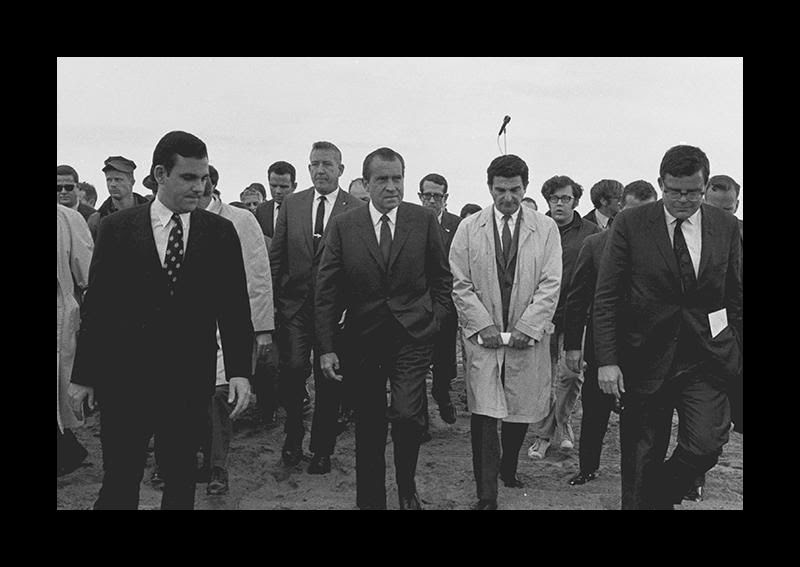
President Nixon visited Leadbetter Beach to inspect the clean-up efforts following the catastrophic oil spill off the coast of Santa Barbara, CA. White House Photo Office Collection, Richard Nixon Presidential Library and Museum; WHPO-0566-08 and 0567-31A
Thursday, April 22, 2021, will be our nation's 51st Earth Day celebration. Spurred by the Santa Barbara oil spill of 1969 and inspired by the Vietnam anti-war college campus teach-ins, the first Earth Day celebrated in 1970 drew upon the emerging public consciousness about the state of our planet. Earth Day 1970 united individual environmental causes and brought them to the forefront of the national agenda. President Nixon committed to improving the environment through legislation that governed the protection of the air, water, wildlife, and the wilderness. This year, Earth Day will focus on education through three days of environmental summits and discussion in the hopes of mobilizing a whole new generation of Earth custodians.
History
Firemen stand on a bridge over the Cuyahoga River to spray water on the tug Arizona, as a fire, started in an oil slick on the river, sweeps the docks at the Great Lakes Towing Company site in Cleveland Nov., 1st. The blaze destroyed three tugs, three buildings, and the ship repair yards.(Bettmann / Contributor via Getty Images)
America's post-war industrial boom of the 1950s and 1960s led to unprecedented industrial and economic prosperity. Unfortunately, this prosperity did not come without a heavy environmental price. By the late 1960s, the nation's metropolises choked on massive brown clouds of air pollution (with many cities under routine smog alerts). Rivers and lakes, often being direct receptacles for raw industrial waste, were dying and unable to support life. Cleveland, Ohio's Cuyahoga River frequently caught fire from its chemical saturation and landfills utilized as general dumping sites for anything from municipal waste, abandoned cars, and even toxic industrial, commercial waste.
Original broadcast of CBS News Special Report with Walter Cronkite about the first Earth Day, 1970.
Ushering In A “Greener” Era
“The tasks that need doing . . . call for fundamentally new philosophies of land, air, and water use, for stricter regulation, for expanded government action, for greater citizen involvement, and for new programs to ensure that government, industry, and individuals all are called on to do their share of the job and to pay their share of the cost.” - Richard Nixon
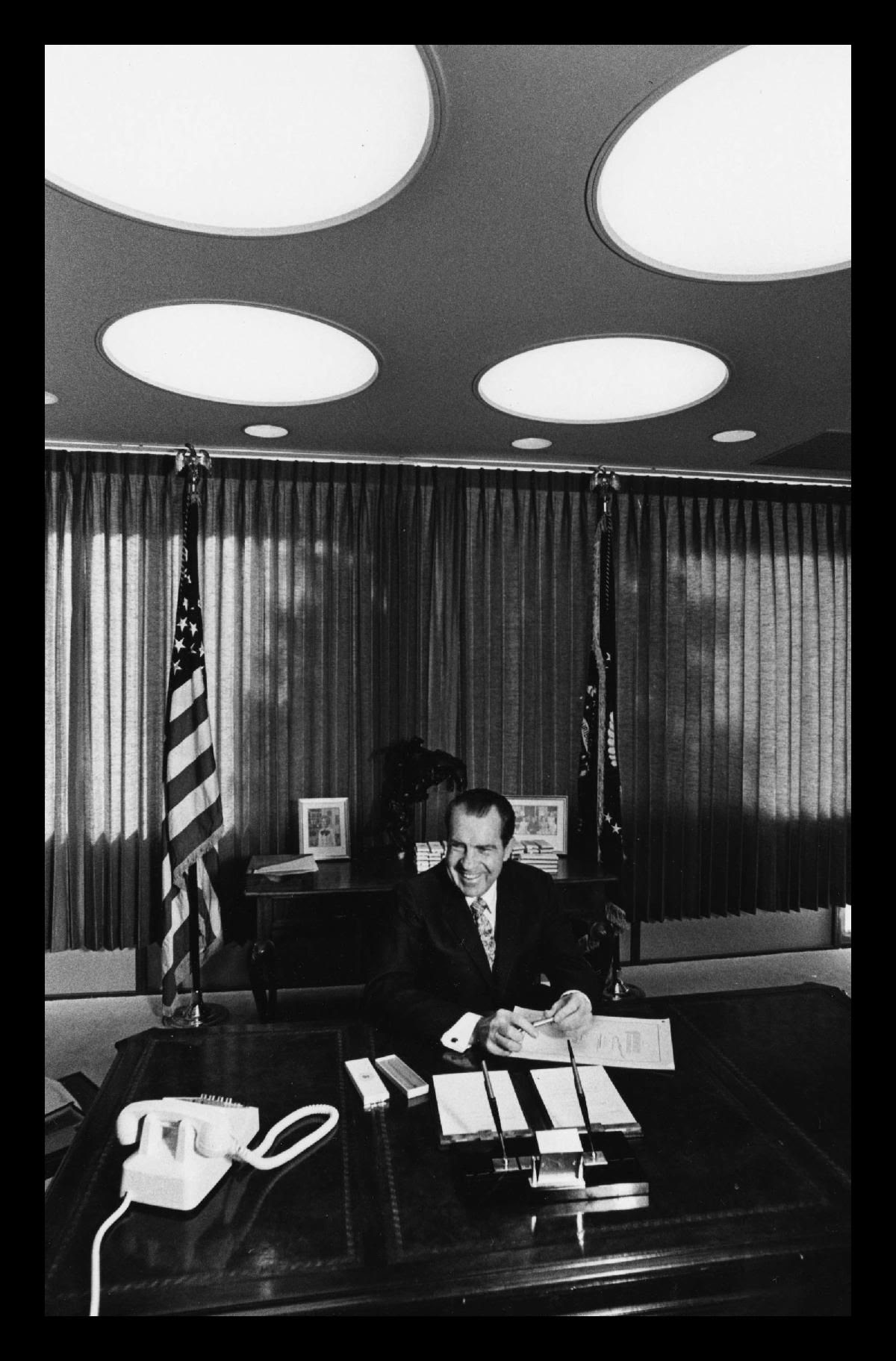
President Richard Nixon Signing the National Environmental Policy Act of 1969; 1/1/1970; Nixon White House Photographs, 1/20/1969 - 8/9/1974; Collection RN-WHPO: White House Photo Office Collection (Nixon Administration); Richard Nixon Library, Yorba Linda, CA. NAID 27580121
Elected in 1968, the new Nixon administration promised action. This action came in the form of new legislation, and on January 1, 1970, President Nixon signed into law the National Environmental Policy Act (NEPA). NEPA “established a national policy on the environment, placing new responsibilities on Federal agencies to take environmental factors into account in their decision making." An initial tenet of NEPA established a three-person advisory group: The Council on Environmental Quality within the President's Executive Office. The Council sought to provide a framework for forming a new cabinet-level department, the Environmental Protection Agency (EPA), established in July 1970 and became operational on December 2, 1970. President Nixon signed into law the Clean Air Act Extension of 1970 on December 30, 1970, which required the EPA to create, monitor, and enforce regulations on air-borne pollution deemed harmful to humans. In October of 1972, he signed the Marine Mammal Protection Act and the Ocean Dumping Act, marking the first time marine mammals and their habitats became protected by law. December 28, 1973, marked the signing of the Endangered Species Act to protect species in danger of extinction due to human activity. The last act proposed by Nixon before leaving office was the Safe Drinking Water Act of 1974. The goal was to protect the public drinking water supply, but it also extended coverage to the nation's rivers, lakes, streams, and wetlands.
In April of 1971, President Nixon celebrated Earth Day's first anniversary with a proclamation establishing Earth Week. His goal was to help further the education and awareness of environmental issues, especially among schoolchildren. As one of America's greenest Presidents, Nixon signed 14 significant pieces of "green" legislation into law during his administration.
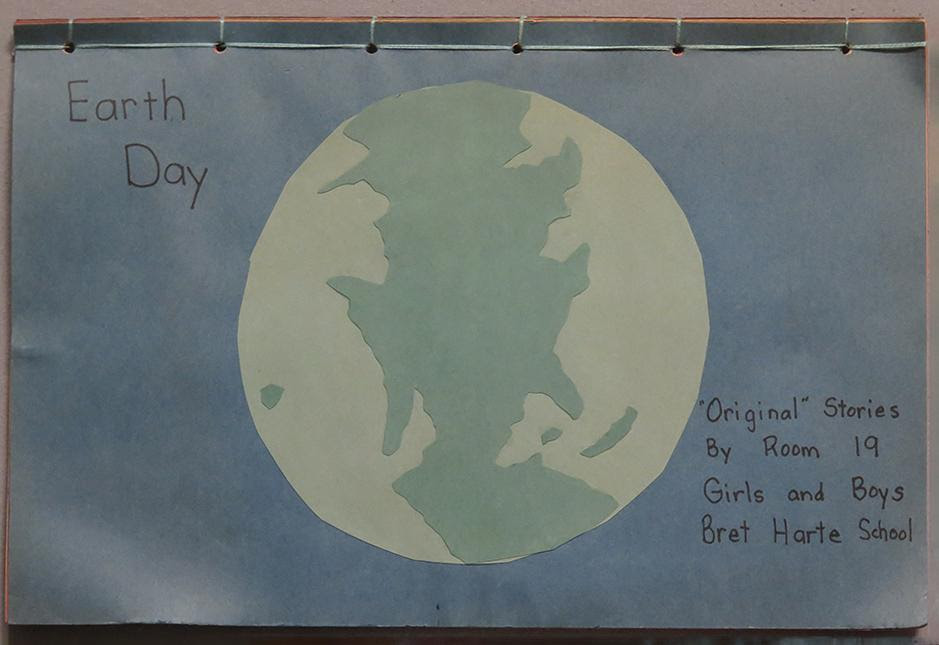
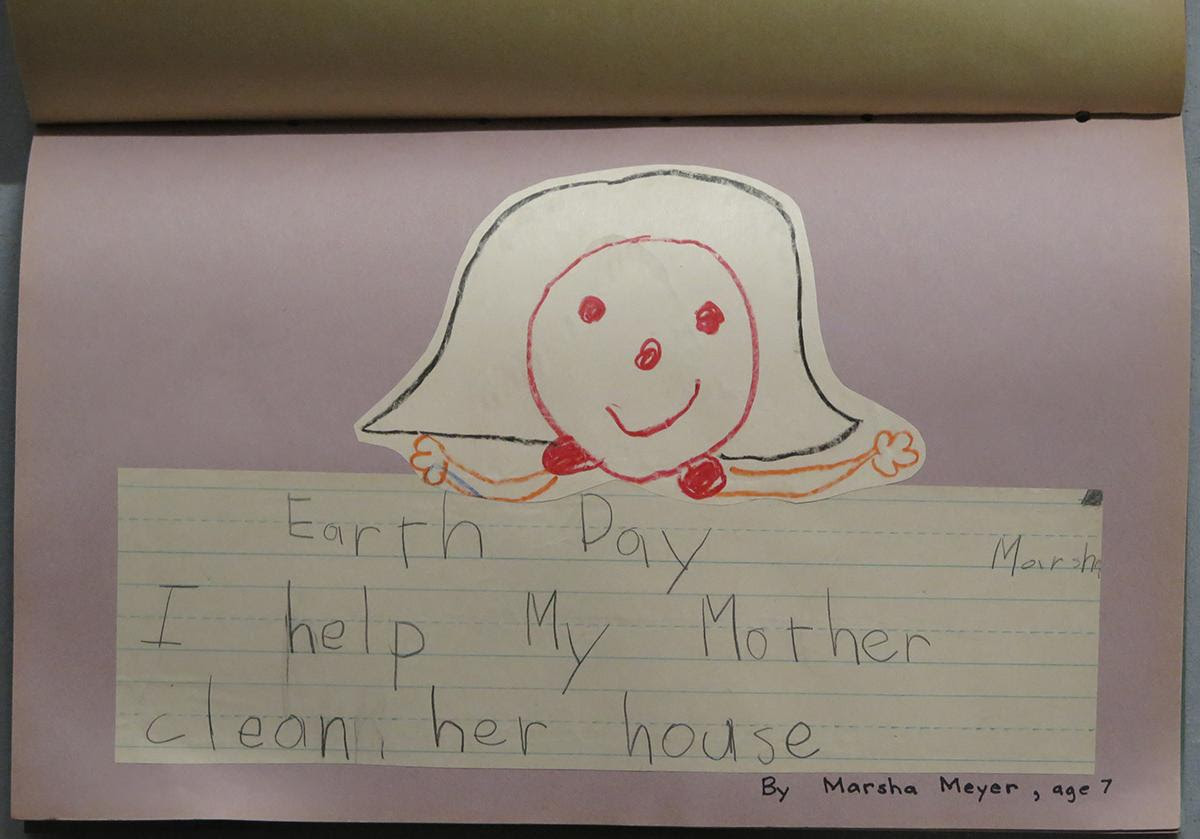

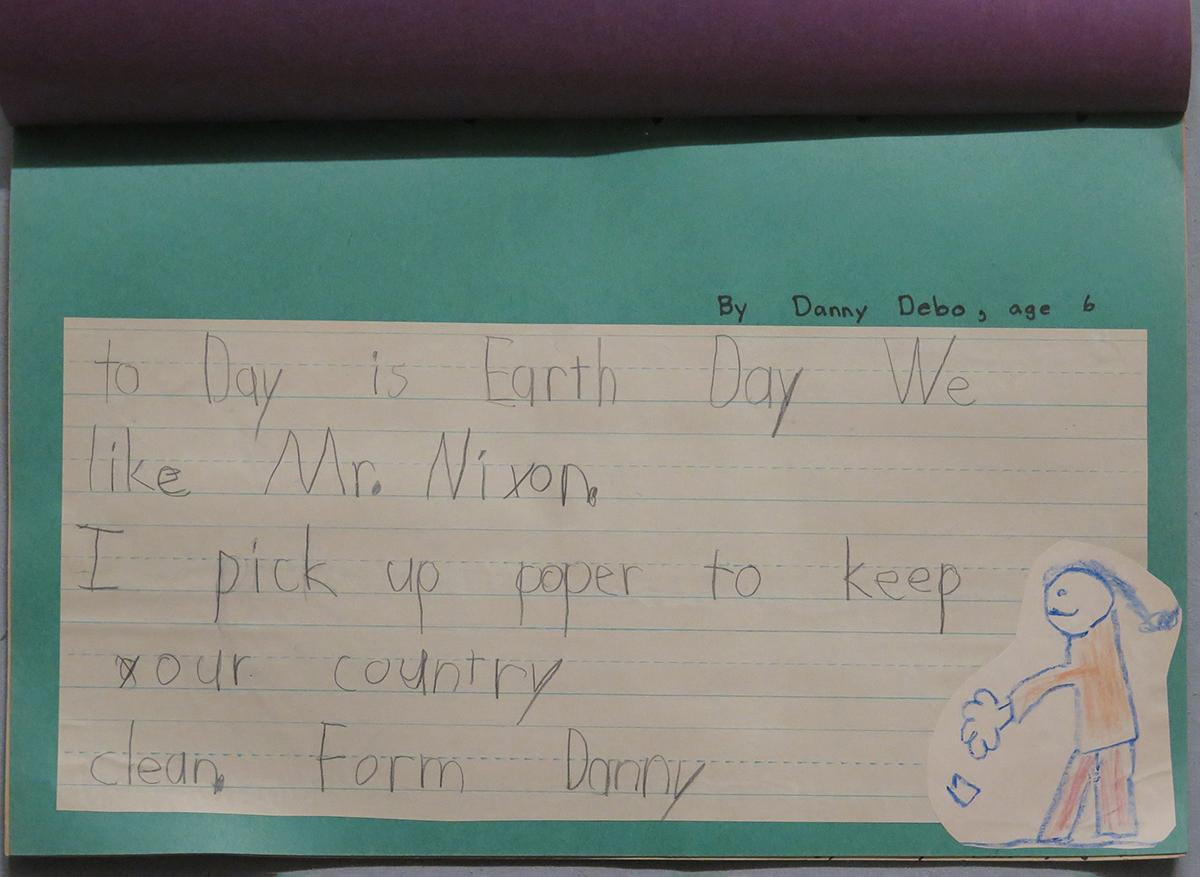
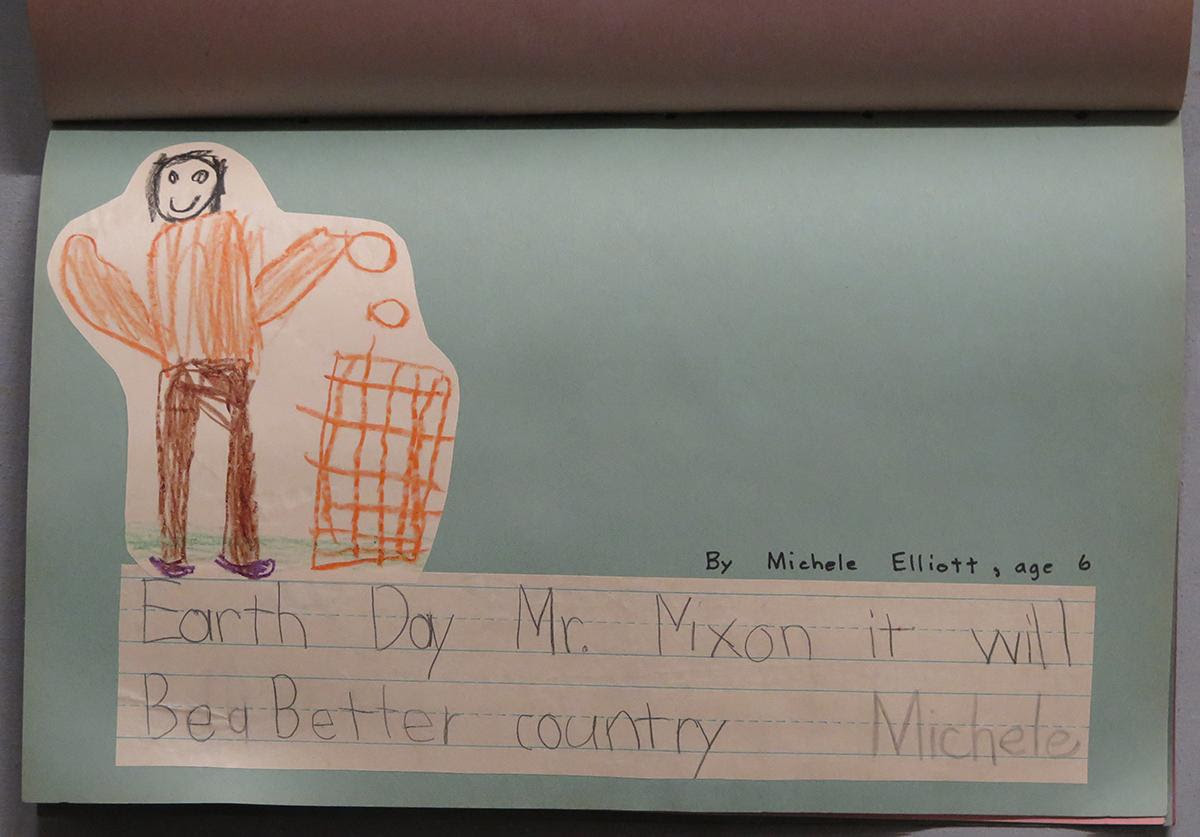
A scrapbook of notes and drawings related to Earth Day by the first grade students of Bret Harte Elementary School, Burbank, California. Gift of Susan Willoughby to President Richard Nixon, D.1970.1124
Earth Day:1970-Today
For the 50th anniversary of Earth Day, the National Archives is featuring this poster by artist Robert Rauschenberg. (National Archives, Records of the U.S. Information Agency)
Twenty million Americans participated in Earth Day 1970 with festivities, rallies, protests, and teach-ins. It went global in 1990, mobilizing 200 million people in 184 countries. The advent of the internet further extended its reach and today 1 billion people worldwide recognize April 22nd as Earth Day. This year’s Earth Day, themed Restore Our Earth, will be celebrated over three days of events and will focus on climate action. In his State of the Union address of 1970, Nixon stated, "Restoring nature to its natural state is a cause beyond party and beyond factions. It has become a common cause of all the people of this country." In a time of such political and ideological unrest, we cannot let politics divert us from responsibility to our shared environment. Please join us in celebrating with a modern-day teach-in at EARTHDAY.ORG.




